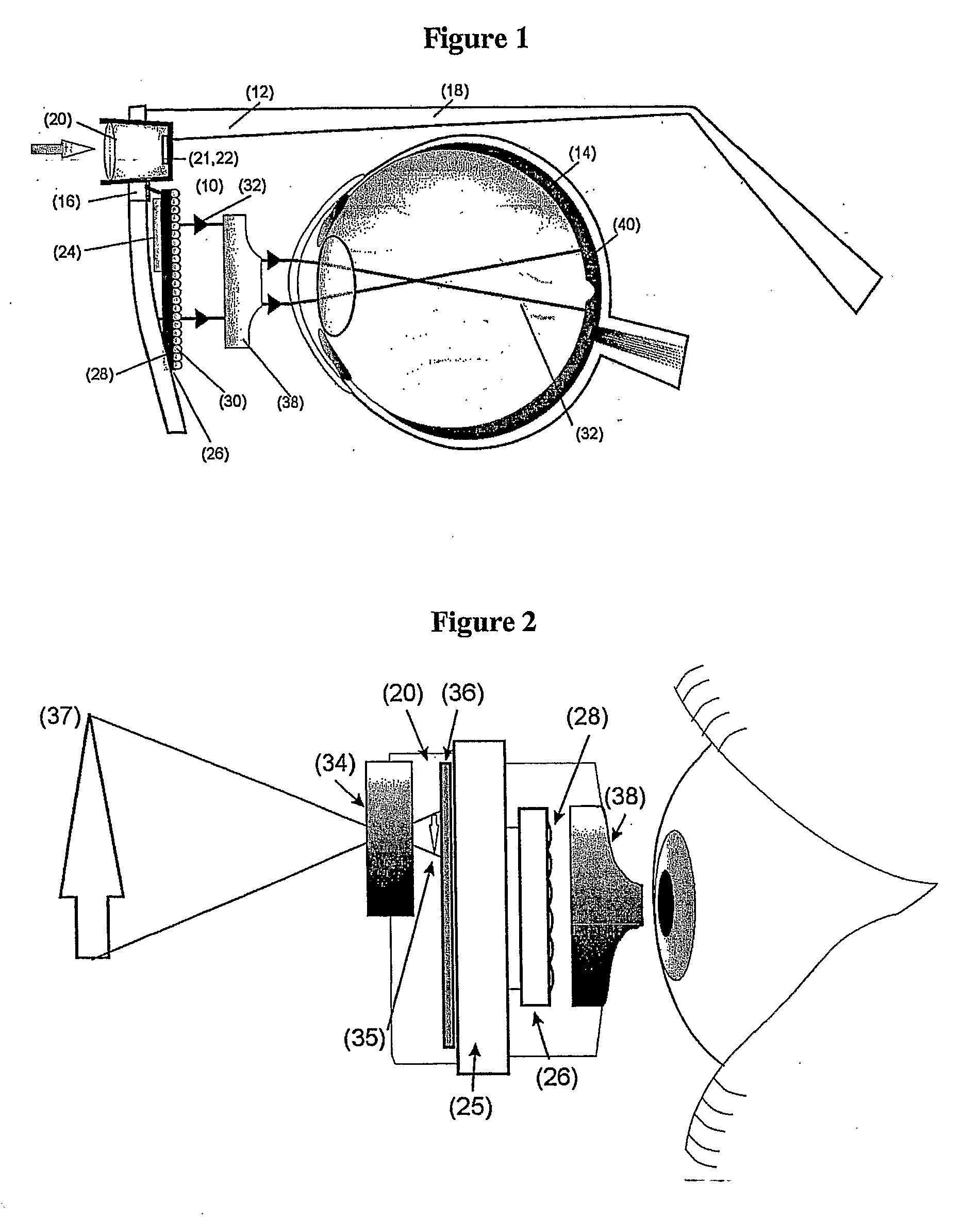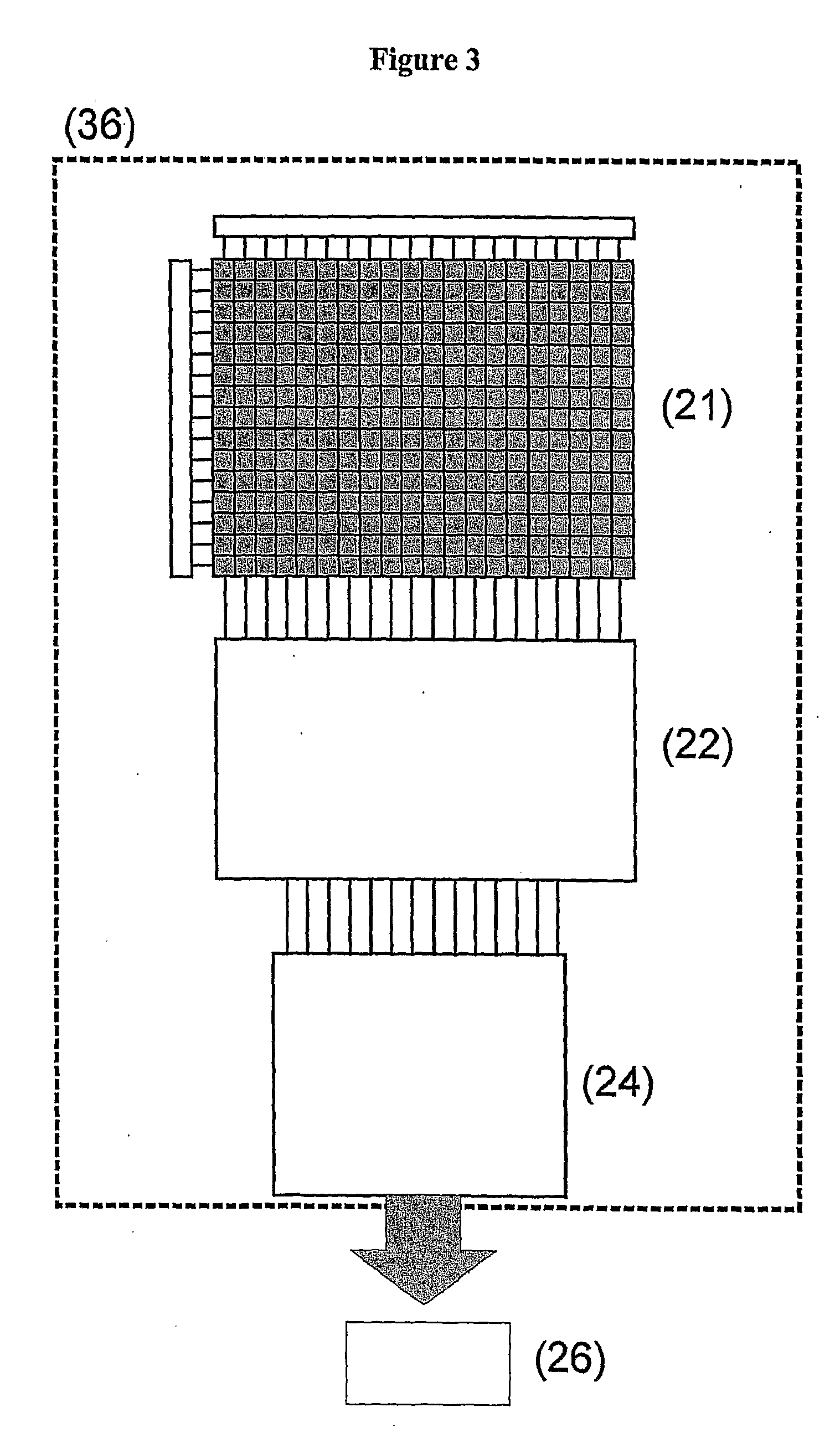Retinal prosthetic devices
a prosthetic device and a technology for retinal prostheses, applied in the field of retinal prosthetic devices, can solve the problems of loss of photosensitivity, lack of known mechanism by which the eye can self-repair, and disappointing medical interventions to da
- Summary
- Abstract
- Description
- Claims
- Application Information
AI Technical Summary
Benefits of technology
Problems solved by technology
Method used
Image
Examples
Embodiment Construction
[0025]Referring to FIG. 1 a visual aid according to an embodiment of the invention comprises a retinal prosthetic device 10 mounted on a frame 12 which is arranged to support the device in front of a human eye 14. The frame is shaped in a similar manner to the frame of a pair of glasses and includes a bridge 16 arranged to rest on the bridge of the patient's nose and arms 18 arranged to be supported on the patient's ears. The prosthetic device 10 comprises in image capture system which includes a CMOS camera 20 and a processor 22 arranged to perform image processing functions. The device further comprises an LED stimulation addressing chip 24 and an array 26 of light sources in the form of LED devices 28 each of which can be turned on and off independently by the addressing chip 24. A lens 30 is located in front of each LED device 28 to focus the light that it emits into a focussed beam 32.
[0026]Referring to FIG. 2, which shows the prosthetic device 10 in a more schematic manner, th...
PUM
 Login to View More
Login to View More Abstract
Description
Claims
Application Information
 Login to View More
Login to View More - R&D
- Intellectual Property
- Life Sciences
- Materials
- Tech Scout
- Unparalleled Data Quality
- Higher Quality Content
- 60% Fewer Hallucinations
Browse by: Latest US Patents, China's latest patents, Technical Efficacy Thesaurus, Application Domain, Technology Topic, Popular Technical Reports.
© 2025 PatSnap. All rights reserved.Legal|Privacy policy|Modern Slavery Act Transparency Statement|Sitemap|About US| Contact US: help@patsnap.com



